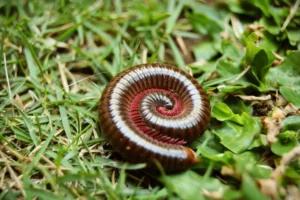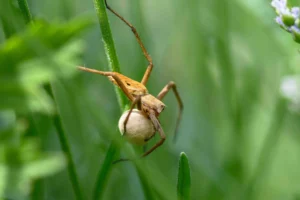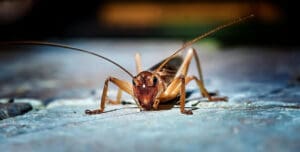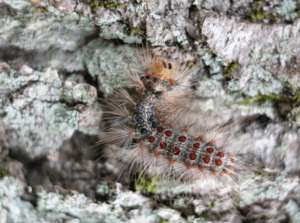
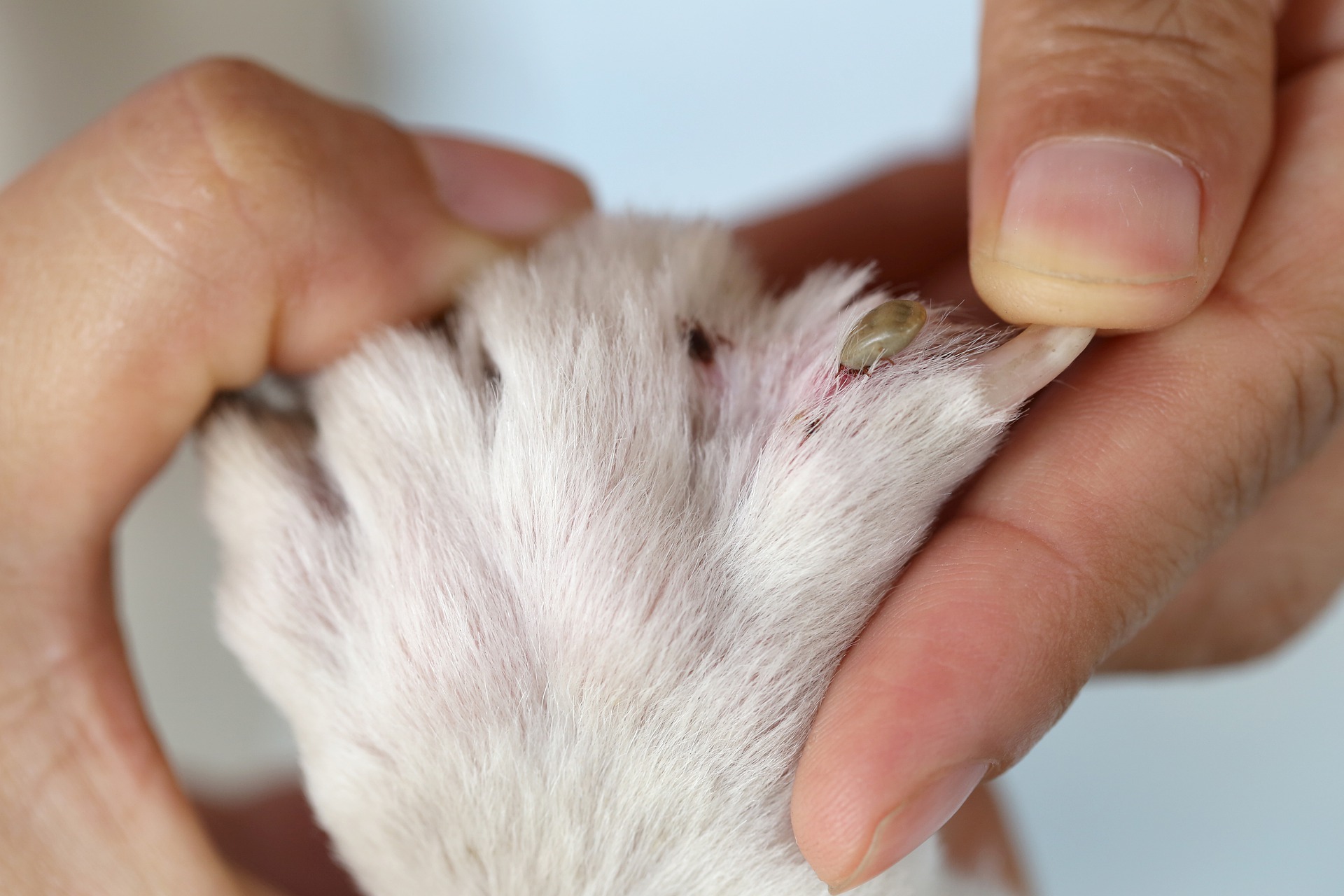
Fleas are a rather unique kind of parasitic insect that can be both a severe nuisance and a health hazard. Like many other parasitic insects, they feed on the blood of animals and humans. They are often mistaken for other, similar-looking pests, but fortunately they have a number of distinguishing characteristics. This guide will teach you how to identify fleas by their appearance and movement style as well as how to differentiate fleas from other pests.
How To Identify Fleas
Body Profile
Fleas have bodies that are oval in shape and laterally flat, which means that when you look at a flea from the top or bottom it appears very narrow. Their abdomens and thoraxes are made up of overlapping segments that fit into one another. A flea’s body is hard and shiny and it is covered with short spines that point away from the head. These spines make it impossible for fleas to move backwards in a host’s fur or hair, which helps prevent easy dislodgement when they settle in for a blood meal.
Coloration
Fleas are generally dark brown, black, reddish-brown, or light brown. New adult fleas that have not fed appear darker than fleas that have taken a blood meal. This is because after feeding, their overlapping body segments expand until they no longer overlap, causing them to appear lighter in color.
Movement
Fleas cannot fly, but they are excellent jumpers and crawlers. They typically only jump to reach a host or escape danger. Once they are on a host, they crawl through the host’s fur or hair, and their bodies are designed for such movement. Fleas secrete an oily substance which helps them easily slide between hairs, and their flat bodies and overlapping body segments provide agile movement ability. In addition, they have narrow, pointed heads which separate the hairs as they crawl. Fleas often crawl on their sides, though they will walk upright as well.
Anatomy of a Flea
Like all insects, fleas are made up of three body parts: the head, the thorax, and the abdomen. Let’s take a more in-depth look at each body segment.
Head and Mouthpart
A flea’s head is high and narrow and has an antenna on each side. Their antennae lay in deep grooves so that they are protected as the flea moves around. Fleas have piercing-sucking mouthparts which are made up of several tubes that come together to form a feeding canal. Two of the tubes are sharp at the end and their purpose is to puncture the host’s skin. The other tubes either inject saliva into the bite or suck up blood.
Thorax and Abdomen
Female fleas are slightly larger than males and have downward sloping abdomens, while the smaller males’ abdomens point upwards. As mentioned, the thorax and abdomen are made up of overlapping segments. The thorax, which is made up of three segments, is where a flea’s legs are attached. Fleas have three pairs of legs. Their back pair of legs is very long and they bend at several joints. This pair is used for jumping.
Jumping Adaptations of a Flea
A fleas back pair of legs are adapted specifically for jumping far distances. They can typically jump around 8 inches vertically and more than 13 inches horizontally. A flea’s long hind legs contain pads of an elastic protein called resilin. The flea’s jumping motion works like a spring or a crossbow string. The flea bends its hind legs, and tendons lock them into a bent position. When the tendons are released, the legs snap almost instantly into a straight position due to the resilin. This launches the flea distances that are roughly 200 times the flea’s body length.
Fun Fact: Resilin is how flying insects fly. The spring-like protein snaps their wings back into place after each stroke, and the action is virtually the same mechanism that fleas use to jump.
Life Cycle Stages and Changes in Appearance of a Flea
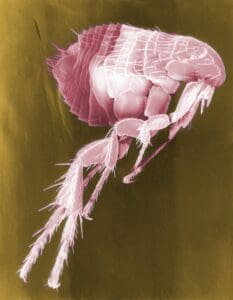
Fleas are one kind of insect that undergoes four life-cycle stages rather than just three. Some insects grow from egg to nymph to adult and only experience an incomplete metamorphosis. Fleas, on the other hand, change drastically throughout their four-stage life cycle. They go through a complete metamorphosis, which is a radical change in appearance and body structure.
Egg
Flea eggs are very tiny. They resemble a grain of salt in color and size, though they are more oval in shape. They are roughly .5 mm long and .25 mm wide, and they are off-white in color.
Larva
Flea larvae are around 2 to 5 mm long and look like tiny worms. Their bodies are whitish in color and have pale hairs.
Pupa
Flea pupae are typically encased in a cocoon so they can undergo metamorphosis. In their cocoons, they transform from the worm-like larvae into fully grown adults. Their cocoons are made of a silk-like material that is white or pale yellow. They resemble tiny lint balls. The pupae inside the cocoons look very similar to adults and are about 1.5 to 3 mm long. With the cocoons around them, they are 4 to 5 mm long.
Adult
Once they emerge from their cocoons, adult fleas are flat, oval shaped insects that are dark in color. They are around 2 to 4 mm long.
Flea Species and Their Unique Appearances
Cat Fleas
Cat fleas are the most common flea species. They are dark brown in color and they feed on a variety of hosts, including cats, dogs, wild animals, and humans.
Dog Fleas
Dog fleas are very similar in appearance to cat fleas, and their differences are really only noticeable under a microscope. They also feed on the same range of hosts. Dog fleas, however, are far less common and widespread as cat fleas.
Human Fleas
Human fleas are dark brown in color and are rather uncommon. They are slightly larger than cat and dog fleas and, unlike cat and dog fleas, they do not have spines on their heads. Human fleas prefer to feed on humans and pigs.
Tips for Examining Fleas
Use Magnification
Fleas are very tiny throughout their entire lifecycle. As such, it may be helpful to use a magnifying glass while searching your pets or property for fleas. Magnification will also make it easier to identify which kind of flea you have on your property, which can affect pest control treatments.
Focus on Common Flea Areas
Fleas tend to hang out in very specific areas, which can make them easy to locate. Outdoors, they like to stay in shady, cool, damp areas like shrubs, tall grass, trees, and wood piles. Indoors, they tend to live in and around areas where pets like to lay. This includes pet beds, upholstered furniture, carpets, and more. When they are on a host, they prefer to stay around the neck, the base of the tail, or the groin area. They also like to hang out on the legs, belly, and back.
Distinguish Fleas from Other Insects
- Bed Bugs- Bed bugs and fleas are often mistaken for one another because they are somewhat similar in appearance, they hide in similar places, and they both cause itchy bites. Bed bugs are flat like fleas, though they are longitudinally flat which is the opposite of fleas. Bed bugs are shaped like an apple seed while fleas are oval in shape. Bed bugs are also larger than fleas and cannot jump.
- Head Lice- Head lice are close in size to fleas but they are lighter in color. Lice resemble sesame seeds- they are oval in shape and they are typically grayish-white or tan in color. Head lice affect humans far more often than they do pets. When they are on a host, they most commonly stay around the back of the ears and the base of the neck.
- Ticks- Unlike fleas, ticks are arachnids- not insects. This means that they have eight legs instead of six. They are also much larger than fleas, and they are longitudinally flat like bed bugs. Once they’ve had a blood meal, however, their bodies are round.
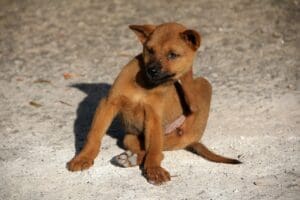
Impact of Flea Appearance on Pest Control
Accurate identification of flea species can sometimes be important in determining effective pest control treatments. This is because different fleas prefer different hosts, and therefore live in different areas. Pest experts need to know which areas of your property require more attention during treatment. In addition, different hosts require different strengths of flea removal treatments.
Fleas reproduce and spread very rapidly, so if you find evidence of fleas on your property, it is best to act quickly. In addition to defleaing your pets, give the experts at Twin-Boro a call and we’ll help you set up a flea control plan that works for you.




